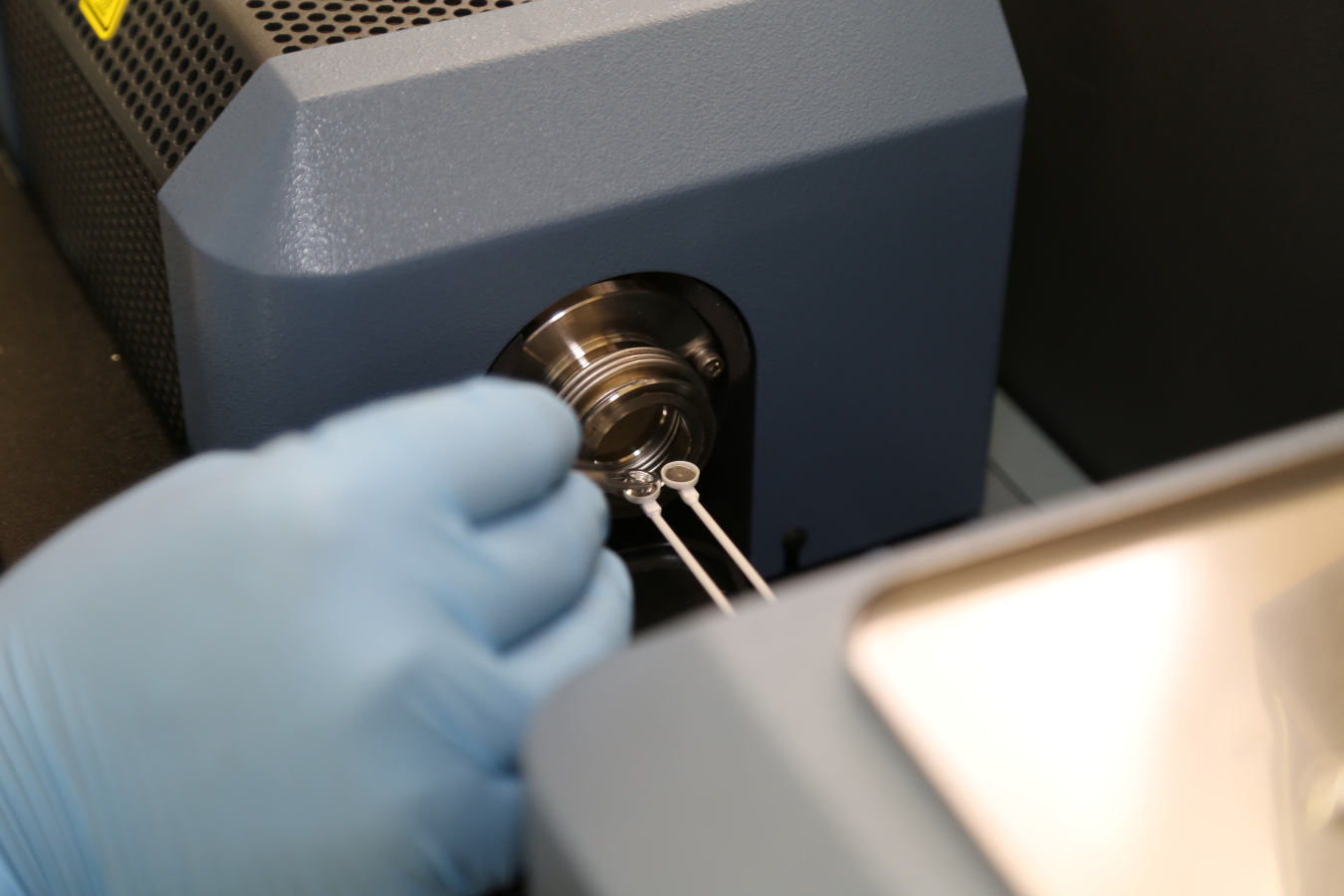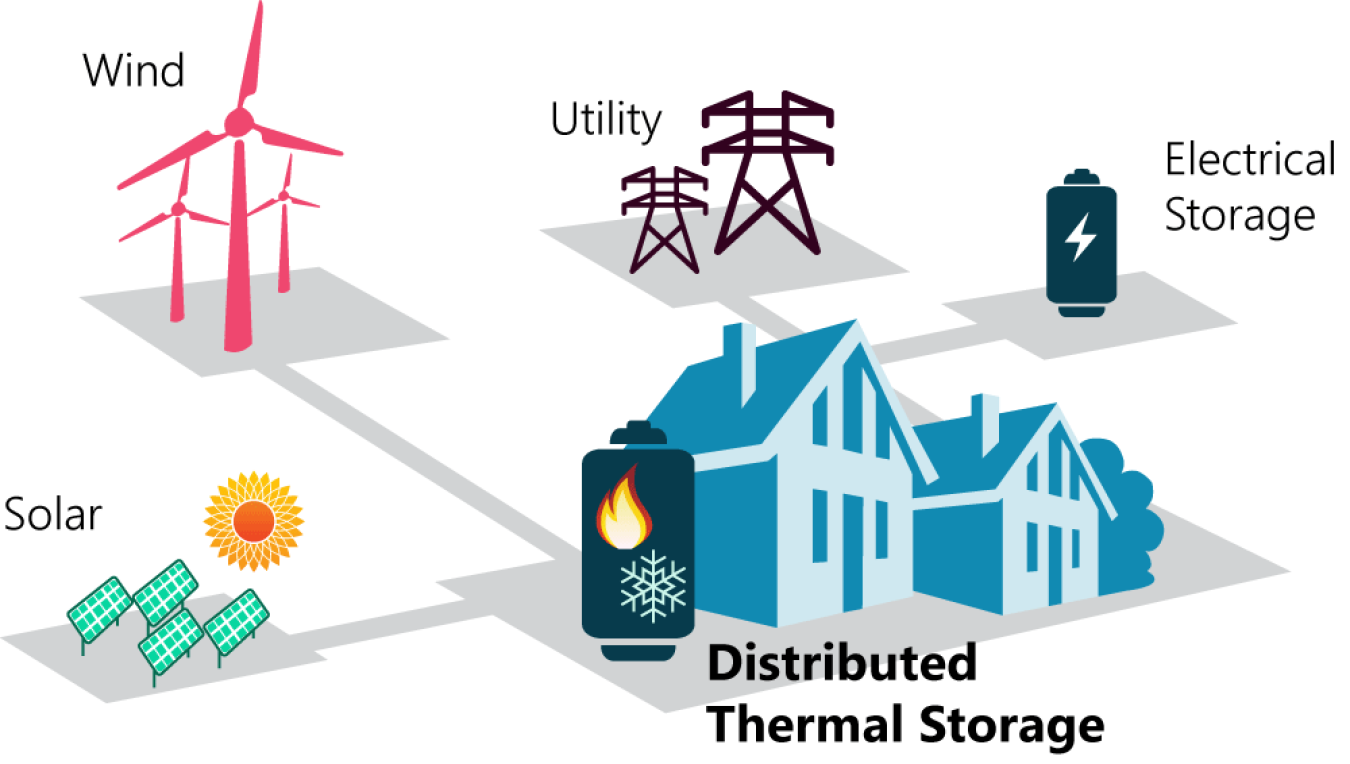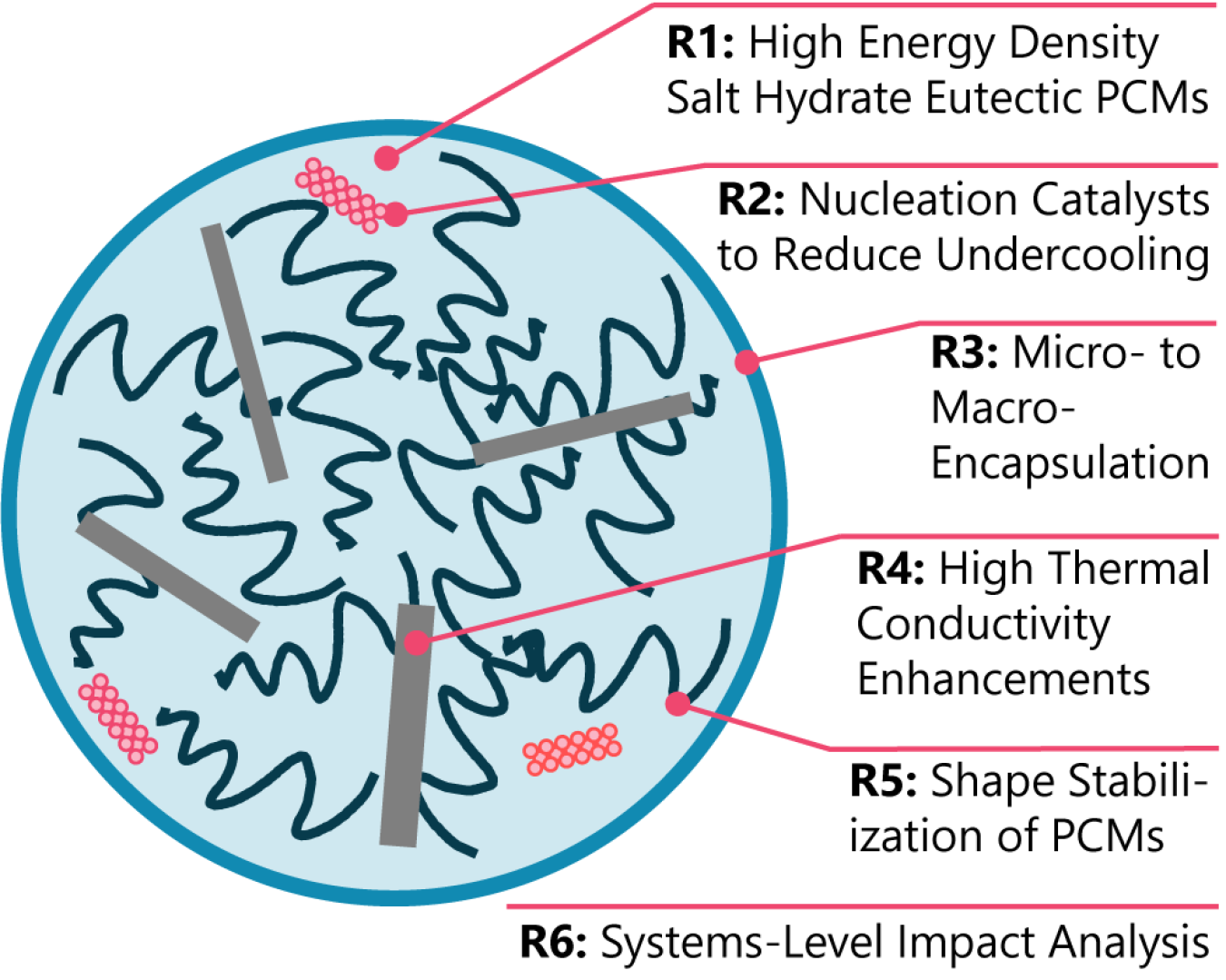Lead Performer: Texas A & M University - College Station, Texas
March 24, 2021
Lead Performer: Texas A&M University - College Station, Texas
DOE Total Funding: $1,546,556
FY20 DOE Funding: $466,749
Cost Share: $386,639
Project Term: April 1, 2020 – March 31, 2023
Funding Type: Buildings Energy Efficiency Frontiers & Innovation Technologies (BENEFIT) FOA 2019
Project Objective
Thermal energy storage is anticipated to play an important role in developing the power grid of the future -- a power grid that meets increasing demands of users, is resistant to disruptions, but also allows for greater penetration of renewable resources. Specifically, thermal energy storage materials can be integrated into HVAC systems and building envelopes, where they can be used to shift power demands for building climate control from periods of peak demand to periods of low demand. Phase change materials (PCMs) are compelling as low-cost, high energy density thermal energy storage materials for building thermal management. However, there is a lack of high-performance low-cost PCMs within the specific temperature ranges that would most effectively allow for power load shifting.
Inorganic salt hydrates represent a promising class of PCMs, but their inherent limitations cause them to be currently unavailable for reliable building applications. The overarching goals of this research effort are to:
- Discover low-cost, high volumetric density salt hydrate eutectic PCMs to store low-quality heat (0 to 60 °C).
- Introduce a high thermal conductivity matrix to reduce the time constant for energy storage to ~0.1 to 1 hour, incorporate nucleation catalysts to decrease undercooling, and utilize microencapsulation and shape stabilization approaches, minimizing moisture loss/gain, mitigating phase separation, and maintaining stable melting behavior over the lifetime of the compounds.
- Evaluate the impact these systems have on peak load shifting, and the potential for overall energy savings under different climatic scenarios and building configurations.
These goals will be achieved by an integrated research program consisting of six cohesive research subtasks:
- Materials discovery of eutectic salt hydrate PCMs by using computationally predicted thermodynamic equilibria, coupled with high-throughput experimental validation.
- Rapid experimental screening of nucleation catalysts identified through robust computational databases.
- Embedding salt hydrate PCM into a low-cost and scalable high conductivity matrix.
- Microencapsulation of salt hydrate microspheres using hybrid inorganic-polymer microencapsulation approach.
- Shape stabilization by thermoreversible salt hydrate salogels.
- Analysis of end-use using thermal simulations, and characterization of mock-up energy storage finished components.
Project Impact
Growth in domestic electricity use, and the variable, and in some cases unpredictable, nature of renewable energy resources severely challenge the ability of the electrical power grid to provide reliable power during periods of peak load. Demand-side power management can play a critical role in displacing electricity use to periods of lower demand, thereby resulting in more efficient utilization of power production resources, and in lower power costs for both consumers and producers, without negative impact to performance and comfort. Together, building heating and cooling account for >30% of the total residential electricity demand, the largest single end use of residential electrical power. Thus, incorporation of a thermal reservoir in residential buildings that could be tapped during periods of peak demand offers a means of reducing peak demand by 30% or more, due to the uneven utilization of these resources. Furthermore, maintaining the temperature of that thermal reservoir near the end use temperature will avoid any additional inefficiencies introduced by having to sub-cool or super-heat the reservoir beyond its operating temperature. Next-generation thermal energy storage technologies will enable the use of energy more productively and efficiently by providing demand-side flexibility.
Contacts
DOE Technology Manager: Sven Mumme
Lead Performer: Patrick Shamberger, Texas A&M Engineering Experiment Station
Related Publications
.....................



